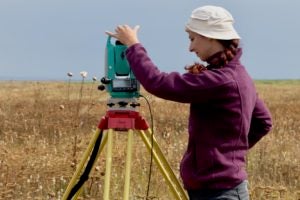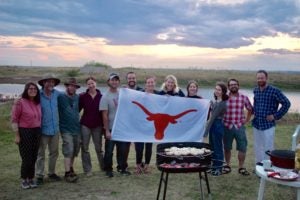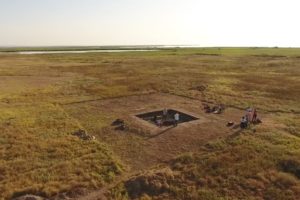“We have not been doing this for very long,” says Adam Rabinowitz.
By “we,” he means humans, and by “this,” he means living in cities. Most of human history was spent hunting and gathering in small groups. By contrast, city life and all that comes with it — from changes in water supplies and deforestation to rapidly expanding populations and invasions — have been a relatively recent developments.
Now, challenges of rapid population growth, increasing urbanization, climate change and the pressure these put on natural resources such as water, all are staring Texas in the face. Planet Texas 2050 is The University of Texas at Austin’s eight-year “sprint” to better understand these forces, and as part of this project, Rabinowitz, an associate professor of classics, is looking for lessons in settlements of the past, and one of the best regions to find those is around the Black Sea.
UT faculty members and students have long studied the region, largely in Crimea. But when Russia took control of Crimea in 2014, archaeological digs, which usually are highly collaborative international affairs, came to an abrupt end. Fortunately, Romania has a 150-mile coastline on the Black Sea that includes the mouth of Europe’s second-longest river, the Danube. It also has a West-friendly government and an academic community eager to unearth its archaeological treasures.
Near where the Danube empties to the Black Sea sits the site of Histria. On treeless grassy flats that cover a once-bustling city of several thousand, Rabinowitz and his colleagues searched the fields using magnetometry, which shows fluctuations in the Earth’s magnetic field that suggest human-made structures now underground.
In the course of that magnetometry survey, they detected a large circular area different from the surrounding soil. This year, they discovered it was a pottery kiln dating to the Hellenistic period, second or first century B.C.E. The kiln could reveal certain features of the area’s economy and technology and its firing chamber could hold burned wood that would provide a better picture of the ancient landscape.
But what they discovered above the kiln, dating from the later Roman period (between the second and fourth centuries), may prove to be even more valuable — the graves of five children. Rabinowitz has high hopes for what these silent witnesses might tell us about their society.
“It is likely that they were loved and mourned, and that is touching to see even from a thousand-some years away.”
How Much Can We See Through a Keyhole?
Graduate student Elijah Fleming is an osteoarchaeologist working on the project. “It is not surprising that we have found many children,” she says — the ancient world was harsh, “but it is uncommon to have the ability to study them.” Because bones of infants and children are small, they often disappear from the archaeological record. And while many archaeologists are more interested in adult remains, Fleming says, “I want to learn what types of foods they normally ate, if they were malnourished in some way, or if they were thriving.”
From these bones and teeth, the team could determine whether children and adults had the same diet, what breastfeeding practices were common, and what contributed to these children’s deaths. “What is clear is that someone in the past took the time and effort to make sure these children were buried appropriately,” says Fleming. “It is likely that they were loved and mourned, and that is touching to see even from a thousand-some years away.”
Testing isotopes in the remains and matching those to chemical levels in known water sources in the area could reveal patterns of movement through the region. Six-year molars, 12-year molars and wisdom teeth all preserve a time stamp of the water and food consumed at the time they formed. Bones, because they are constantly remodeling, reveal what people were consuming the year they died. These four time stamps can show movement patterns including whether people were native to the areas where they were buried.
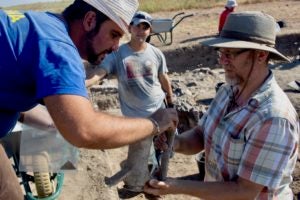
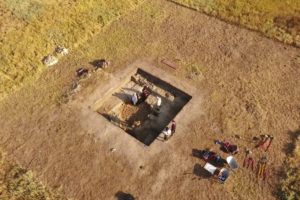
Whereas much of science today involves taking a huge number of snapshots of a single moment and using supercomputing to find patterns (think weather stations), the unique value of this work is how it can generate data points that can track developments over hundreds or thousands of years in a relatively small area. “This site is interesting to me because of the time depth,” says Rabinowitz. “You have good evidence for a what an archaic city looks like in the sixth century B.C.E., what a classical city looks like in the fifth century, a Hellenistic city in the fourth and third centuries, and then you get a Roman necropolis.” Because of this rich vertical record, an astute team can start to reconstruct a multichapter story about demographics, identity, the distribution of resources, access to food, destruction and resilience.
“We’re hoping to gain new information — both from the human remains now and from the environmental remains from deeper levels — about equality or inequality in the distribution of resources. Did some people get more to eat than others? Were some groups of people sicker than others?” Rabinowitz asks. “We hope to correlate these findings with the historical record for the city in different periods with an eye to exploring the effects of inequality on a community’s resilience. This is pretty ambitious for the moment, since we’re really just peeking through a tiny keyhole right now, but in the longer term, this is our goal.”
They want to understand how this city managed its ecosystem across time. Where did its people get their water? How much did they rely on plants or animals to feed the population? How did their agricultural activities affect local ecosystems? For Planet Texas 2050, this could hold lessons about sustainability in the face of changing environmental conditions.
Since human remains from the Greek period are less likely to be found, the team will focus on environmental remains from earlier periods — carbonized plant material, core samples from lake bottoms, water and soil chemistry. This would help fill in the blanks about what people were eating, what animals were being raised, and what the animals were eating. This in turn could tell us about the landscape, what was growing in which places, what that means about deforestation and the ways land was used or abandoned.
“The questions we are posing are really about resilience and adaptability,” says Rabinowitz. Besides the Black Sea investigations, the Planet Texas 2050 initiative is looking at Roman aqueducts and how the ancient Maya managed water. Eventually, once the volume of data warrants it, they plan to employ supercomputing at the Texas Advanced Computing Center to help find patterns they might not spot with the naked eye.
On the Border
Rabinowitz tends to study borderlands because they are particularly susceptible to shock. “Because Histria is in a place where two worlds meet — the extended Mediterranean and the world of the steppe — because it is at the border of the Roman Empire, because it is in a place that is a hot spot where geopolitical forces clash, because it is subject to environmental change — it’s a really interesting place to understand how a community copes with this diverse set of challenges over 1,400 years, despite every century or so someone coming and burning it down.”
During the Roman period, for example, Goths and other tribes attacked Histria repeatedly, burning it to the ground at least once. “At any one of these points when the city gets burned down, they could just say it’s not worth it. We have examples of this in the ancient world, where cities are completely abandoned,” he notes.
Why and how they kept bouncing back is a central question. The UT team is interested in how environmental factors such as water and food supply can tip the balance toward or away from resilience in the wake of these chaotic episodes. “The story of this particular site is less about how you create a successful settlement and more about why people stay there over time.”
Understanding connections between climate, resources, and population movement has a clear application in Texas’ own borderlands. The proximate cause of the refugee crisis along the Rio Grande is gang violence in Central America. But the ultimate cause, says Rabinowitz and many others, may prove to be environmental: deforestation and climate-change-exacerbated droughts and floods have created hardship for farmers in Guatemala, Honduras and El Salvador. This makes high-profit activity such as drug trafficking attractive, even as it is risky and violent.
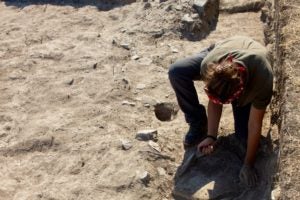
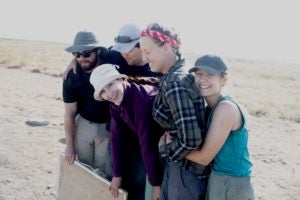
The Dig Experience
The experience of the dig stretches students in all sorts of ways. “We had to coordinate between a host of languages, backgrounds and knowledge sets while excavating in conditions that were sometimes quite difficult,” says graduate student Susan Crane. The Longhorns worked not only with archaeologists from other American universities but also from Romanian and Ukrainian. “This experience as a whole definitely improved my communication skills,” Crane says.
She adds that the narrowed scope of the project and the small number of team members meant that students were involved in all parts of the dig. “It made for a really wonderful time that helped me clarify who I am as an archaeologist and what I prioritize in the field.”
Excavating is harder than many people expect, Crane says, and it takes time to do well. “Forming strong relationships in the field so we can continue our work beyond the dig season is vital.”
The UT team hopes to return to Romania during the coming year and to this site that holds more questions and more answers for Planet Texas and Planet Earth.
